Author: Zen, PANews
With the emergence of electronic navigation maps, the way humans travel has undergone significant changes. Traditional static maps have transformed into a real, dynamic, and real-time perceivable digital world.
According to contemporary map scholars Harley and Woodward, "A map is a graphic representation that helps to understand things, concepts, conditions, processes, or events in the human world spatially." Therefore, high-definition maps (HD Maps) with greater richness, accuracy, and freshness have naturally become an indispensable new type of digital infrastructure for the future of autonomous driving and smart cities, especially as "fuel" for highly automated (L4) and fully automated (L5) driving technologies.
However, high-definition maps face issues such as high costs and slow update speeds, making large-scale implementation unfeasible. According to the "High-Definition Map White Paper for Intelligent Connected Vehicles," the mapping efficiency for centimeter-level maps is about 100 kilometers of road per vehicle per day, with costs reaching around 1,000 yuan per kilometer, resulting in enormous expenses. On the other hand, in 2023, the total mileage of pure electric new energy vehicles in China has already exceeded 160 billion kilometers. This raises the question: if these drivers could participate in data and image collection without additional effort and even receive compensation instead of having their data monopolized by companies, could the dilemma of high-definition maps be broken? The decentralized mapping network Hivemapper is doing just that.
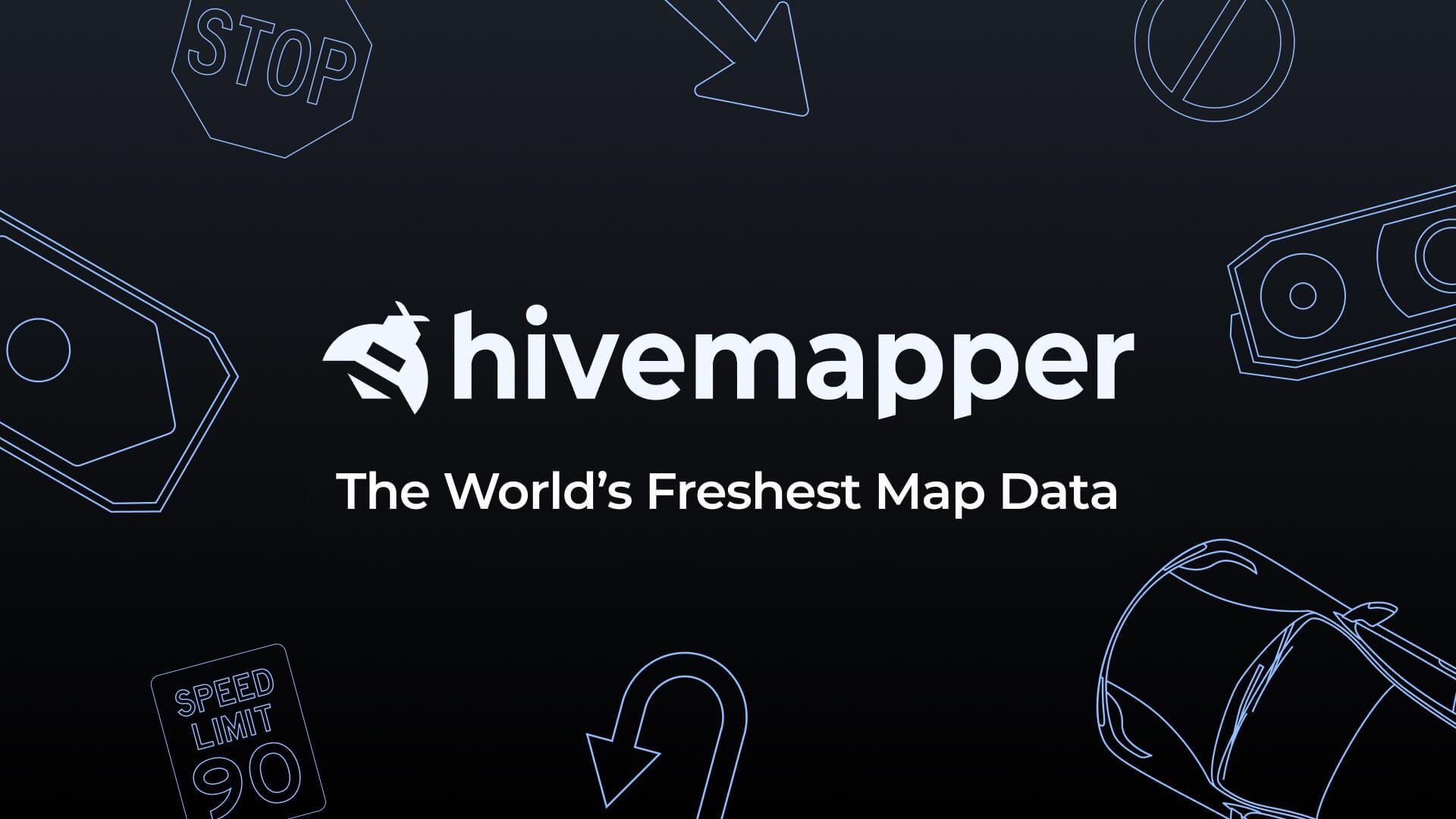
Mapping 28% of the World's Roads in Two Years
Launched in November 2022, the Hivemapper network is an open, global, decentralized mapping network based on the Solana blockchain. It uses AI technology to build maps based on the daily travel of thousands of drivers. In just two years, Hivemapper has mapped 28% of the world's roads, capturing over 28 million kilometers of street-level images each month on average, detecting and mapping thousands of map features, growing five times faster than Google Street View. Despite facing hardware shortages in the past year, Hivemapper's map coverage expansion speed still far exceeds that of any other crowdsourced mapping project, even faster than projects that only require smartphones.
Currently, three of the top ten map makers globally, including HERE Technologies, rely on Hivemapper to keep their maps updated, and leading companies in the automotive and logistics industries have begun to adopt it. Hivemapper's outstanding performance has also garnered attention and praise from several well-known investment research institutions, including A16Z, Binance, Blockworks, Coinbase, and Messari. For instance, in the 2024 Cryptocurrency Status Report released by a16z, Hivemapper is highlighted as a typical application of the DePIN project in the real physical world.
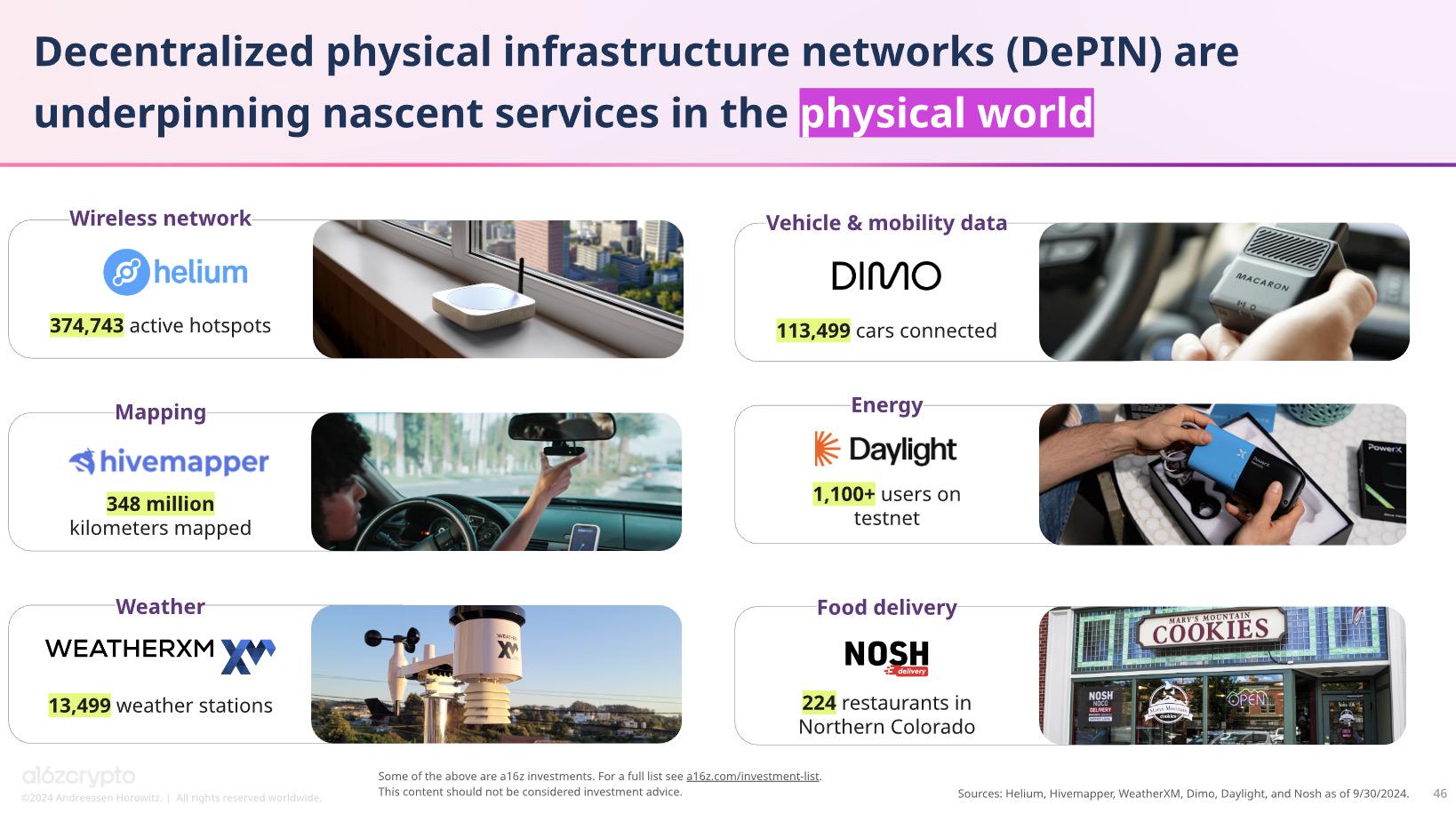
Hivemapper's stable and rapid growth is attributed to its correct development direction and a professional team. Project founder and CEO Ariel Seidman began his mapping career over a decade ago at Yahoo Search and Maps and realized that traditional solutions were prohibitively expensive. Since then, Seidman has been dedicated to building a new global map, with his first project, Gigwalk, being a location-based data collection company that collects data through mobile devices and allows people to earn extra income. It was also shortlisted as one of the top ten mobile innovation companies by the well-known business magazine Fast Company. Evan Moss is the co-founder and CTO of Hivemapper, and as a seasoned developer, his expertise spans mapping, automated quantitative human-computer interaction systems, computer vision, data science and machine learning, remote sensing, graphics programming, and distributed systems.
In terms of funding, according to public information, in April 2022, Hivemapper announced the completion of an $18 million Series A financing round, led by Multicoin Capital, with participation from Craft Ventures, Solana Capital, Shine Capital, and others. Including previous rounds of investment from Spark Capital, Founder Collective, and Homebrew, Hivemapper has raised at least $23 million in total. Additionally, in July 2023, asset management company VanEck announced a deal with Hivemapper to directly invest in Hivemapper's HONEY token. In a statement from VanEck, it noted, "In the long run, Hivemapper may be able to capture market share from existing map providers by offering better and cheaper products to customers."
The "Triple Dilemma" of Crowdsourcing Models
Since Google Street View was officially launched in 2007, the entire mapping industry has begun to follow suit, using fleets of street view vehicles to capture 360-degree panoramic images and allowing users to view these images on maps as if they were there. This traditional method is highly reliable and well-tested, but it has the fatal flaw of being extremely costly. Even industry giants like Google can only collect real map data every one to two years.
Therefore, high-quality crowdsourced data is the ideal solution. Existing crowdsourcing solutions can be roughly divided into three options: smartphones, specialized equipment like dashcams, and sensors directly built into vehicles. However, just as blockchain faces the "impossible triangle" of scalability, decentralization, and security, building high-definition maps also encounters a "triple dilemma" of rich imagery, consistent data quality, and scalable coverage.
For example, smartphones have a low barrier to entry, allowing for widespread user participation and eliminating the need for developers to design and manufacture hardware. However, they lack mapping-grade precision, do not have stereo camera options, and the performance of AI models is subpar, making it difficult to accurately locate map data. To date, no smartphone-based project has been able to continuously refresh map data at scale.
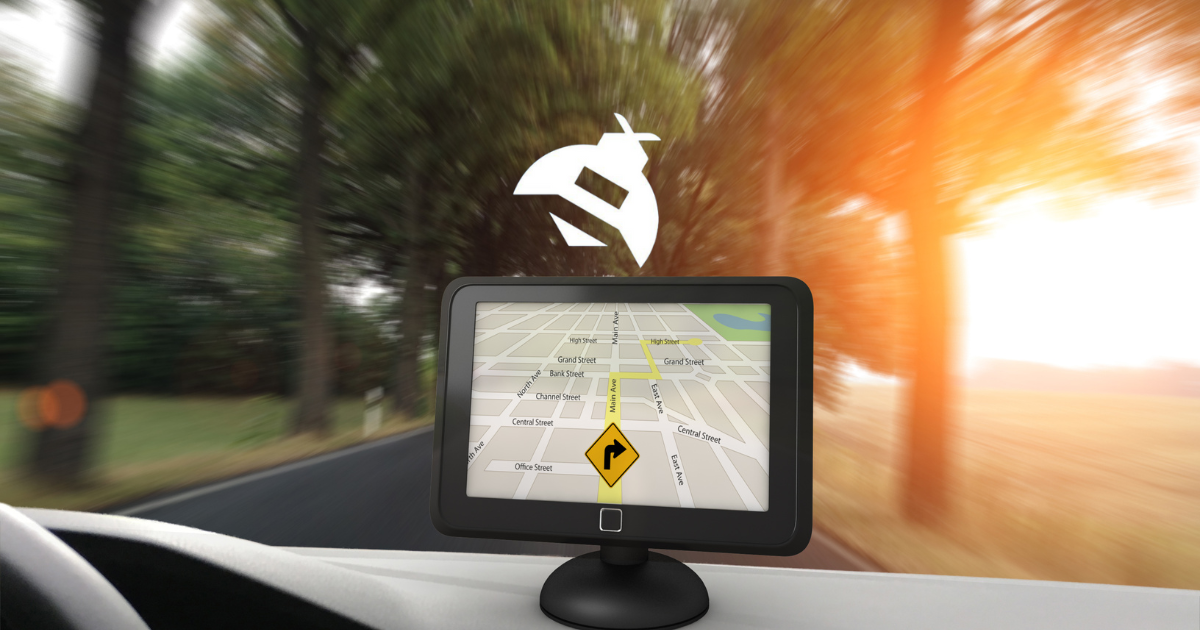
Additionally, while smart vehicles equipped with ADAS modules have hardware requirements that closely align with map data collection, their map data lacks high-definition images to verify authenticity and accuracy. Most automakers are unwilling to provide access to vehicle images, limiting the bandwidth for uploading map data to the cloud via in-vehicle remote communication.
To address the "triple dilemma," Hivemapper Inc., the developer behind the Hivemapper network, launched its innovative navigation map brand Bee Maps and designed and introduced the "ultimate map miner" Bee, which also serves as a high-end dashcam to ensure drivers' safety during daily driving. Notably, with the introduction of Bee Maps, the Hivemapper network is now positioned as an open-source platform that allows any developer to build on it, with Bee Maps being the first case of a product created using this platform.
AI+DePIN Achieving Innovation in Crowdsourcing Models
To create a "near-zero latency real-time map," not only must map makers efficiently extract edge intelligence, but they must also find a way to quickly relay this information to map users. Although cloud computing costs continue to decline, the ongoing collection of images for every road globally still incurs high costs. Therefore, in practice, leading mapping companies have begun to leverage AI to replace repetitive image review and manual map updating tasks, which not only saves labor costs but also significantly reduces the amount of imagery stored on centralized servers, helping to protect data and privacy.
The Bee dashcam designed by Bee Maps offers better positioning, more consistent data quality, and a more user-friendly experience, making it more suitable for running Map AI than most devices on the market. After months of prototype testing, Bee is set to begin mass production in the fourth quarter of 2024, with tens of thousands of devices already on pre-order.
Unlike the ADAS modules in modern vehicles, Map AI provides imagery and standard stereo cameras for more precise and efficient computation of 3D map feature reconstruction. It can dynamically process a suitable number of frames to extract useful map data, and all selected frames undergo privacy blurring before processing by Map AI, with all detected people and vehicles irreversibly blurred to protect bystanders' privacy.
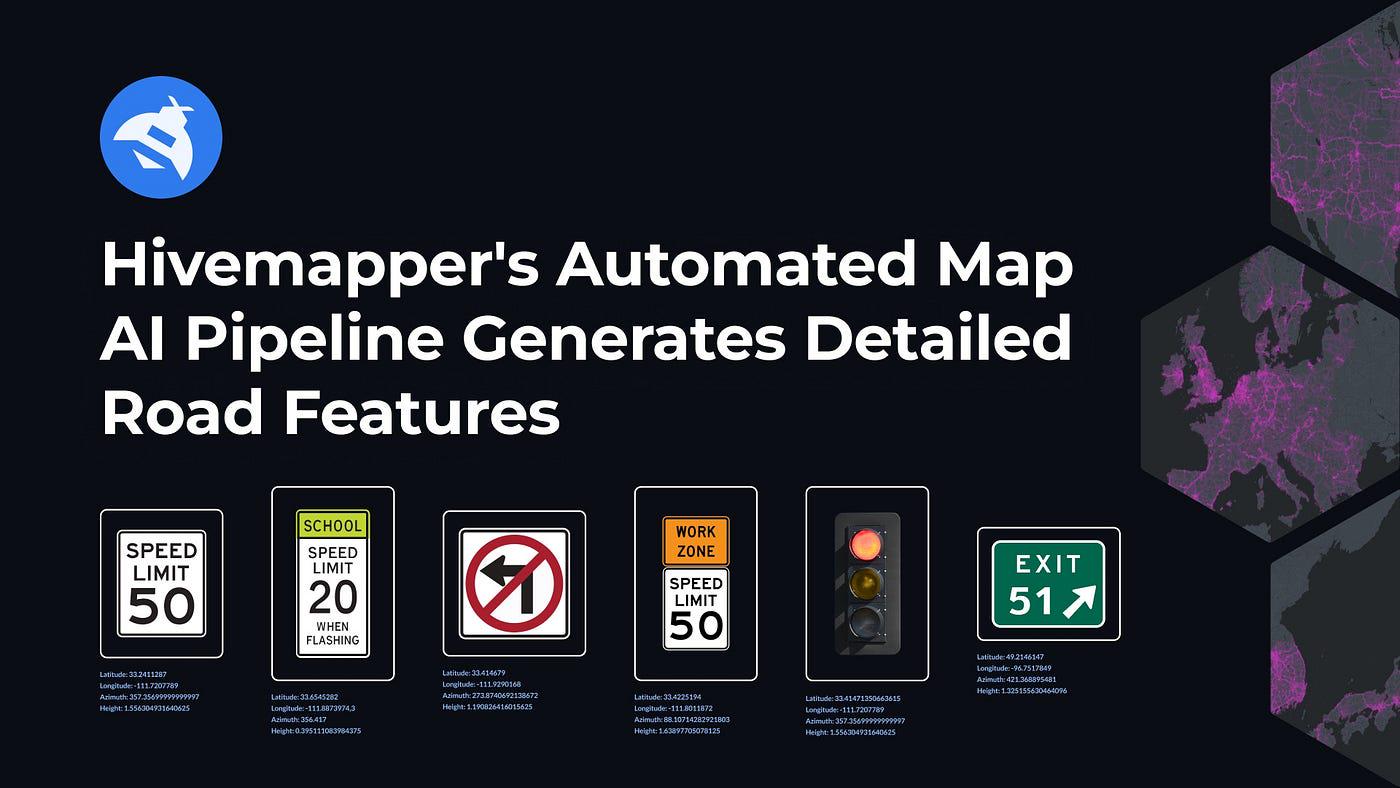
Furthermore, Map AI uses a custom-optimized YOLOv8 computer vision model to detect relevant map features such as traffic lights and road signs from the privacy-processed keyframes. By comparing two images captured by Bee's stereo camera, Map AI employs reprojection techniques to estimate the depth map for each pixel of the central RGB camera.
This depth map, combined with Bee's high-precision GPS coordinates and IMU readings of orientation, allows Bee to estimate the precise latitude, longitude, and size of the relevant map features detected by computer vision, sending this accurately located map feature data packet to the Hivemapper network, enabling the final customers of the map data to detect changes in near real-time. In the final quality assurance process, human review will ensure that map features have been correctly classified, located, and deduplicated.
In terms of other hardware and software, the combination of stereo cameras and DepthAI software is one of the key differences between Bee and other crowdsourced map data collection platforms. As long as the precise location and orientation of the dashcam are known, depth cameras can triangulate the position of objects in the real world. By combining the left and right images, Bee can calculate the estimated differences (disparity map) between the same pixels on each image to estimate the distance of each pixel from the dashcam. In addition to the lenses, Bee's mapping performance also comes from a customized version of the Luxonis OAK-SoM computer vision module, designed for real-time operation of low-power, high-performance AI and depth perception tasks. It is a mainstay device capable of generating consistent map data around the clock on highways.
Hivemapper, HONEY, and the Multi-Billion Dollar Market Behind It
Unlike most projects on the market that focus on niche markets or have unproven business models and values, the Hivemapper Network is backed by a corporate mapping market worth hundreds of billions of dollars annually and a geospatial services market worth trillions of dollars. As its products are now used by some of the world's most advanced mapping and technology companies, the market size is expanding, and it is expected to capture a share of this vast market.
The HONEY token is the native token of the Hivemapper network, built on the Solana blockchain, and is currently listed on several major exchanges, including Coinbase, Kraken, Gate, and BingX, as well as the leading DEX in the Solana ecosystem, Raydium. Additionally, MEXC just launched the HONEY/USDT trading pair on November 14 at 3 PM.
Unlike many project tokens that lack practical use cases, the HONEY token can be used to create economic incentives within the network while balancing the needs of two groups in its ecosystem. Specifically, contributors who participate in and assist in building the maps can earn HONEY as a reward; businesses and developers use map data to support their products and services, and every time they use data from the Hivemapper network, HONEY will be burned.
According to the MIP-15 proposal, 75% of the HONEY exchanged for map points each week will be permanently burned, while 25% will be re-minted as consumption rewards, with a maximum weekly consumption reward cap of 500,000 HONEY. Any excess will be permanently burned. This means that when sufficient revenue is generated, the token supply will become deflationary.
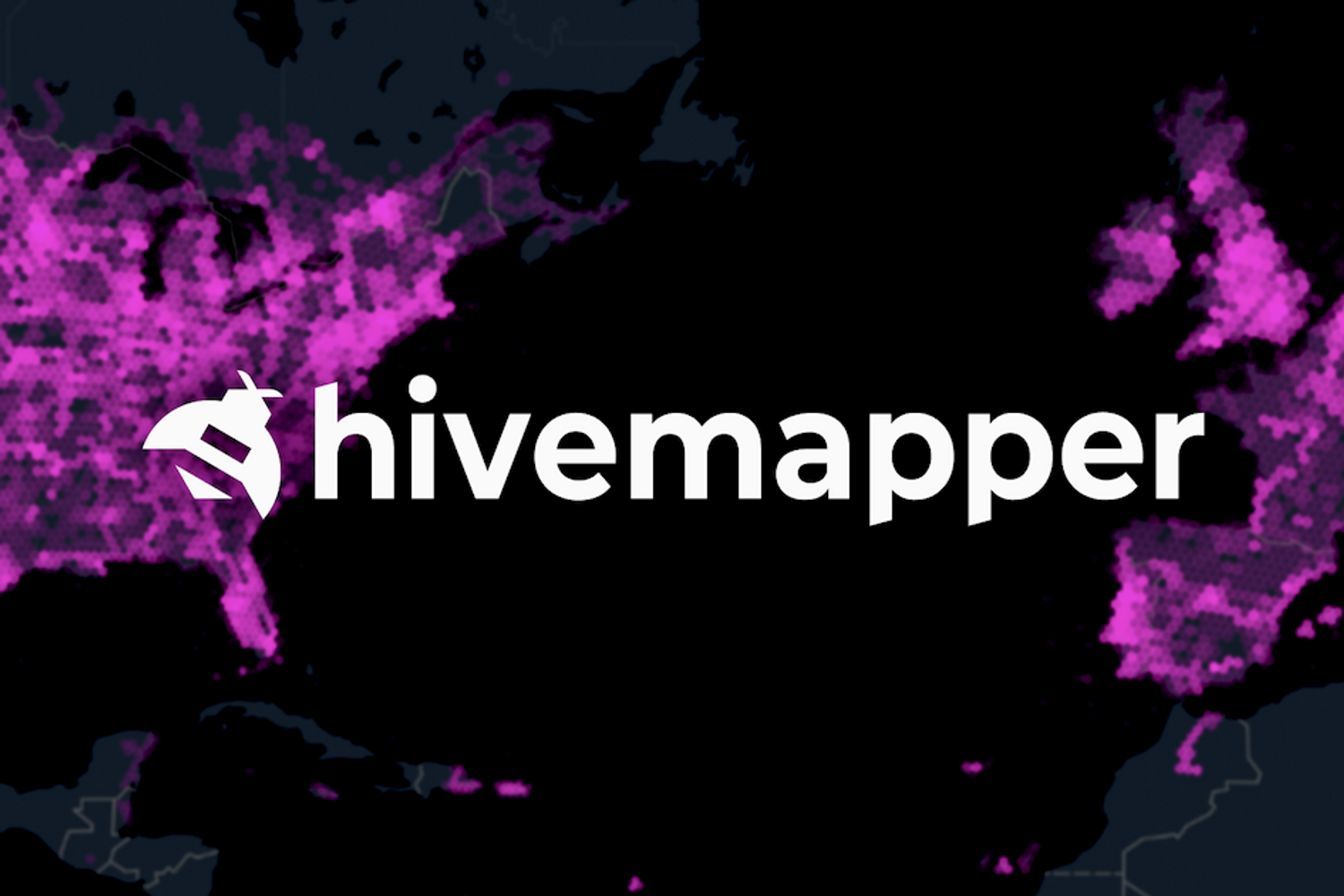
A recent report from Blockworks Research also noted: "The HONEY rewards from Hivemapper exhibit impressive capital efficiency." "Given the multi-billion dollar scale of the mapping market, the upcoming Bee dashcam, and Hivemapper's relatively low HONEY emissions, we believe the on-chain net consumption of the HONEY token is foreseeable."
免责声明:本文章仅代表作者个人观点,不代表本平台的立场和观点。本文章仅供信息分享,不构成对任何人的任何投资建议。用户与作者之间的任何争议,与本平台无关。如网页中刊载的文章或图片涉及侵权,请提供相关的权利证明和身份证明发送邮件到support@aicoin.com,本平台相关工作人员将会进行核查。




